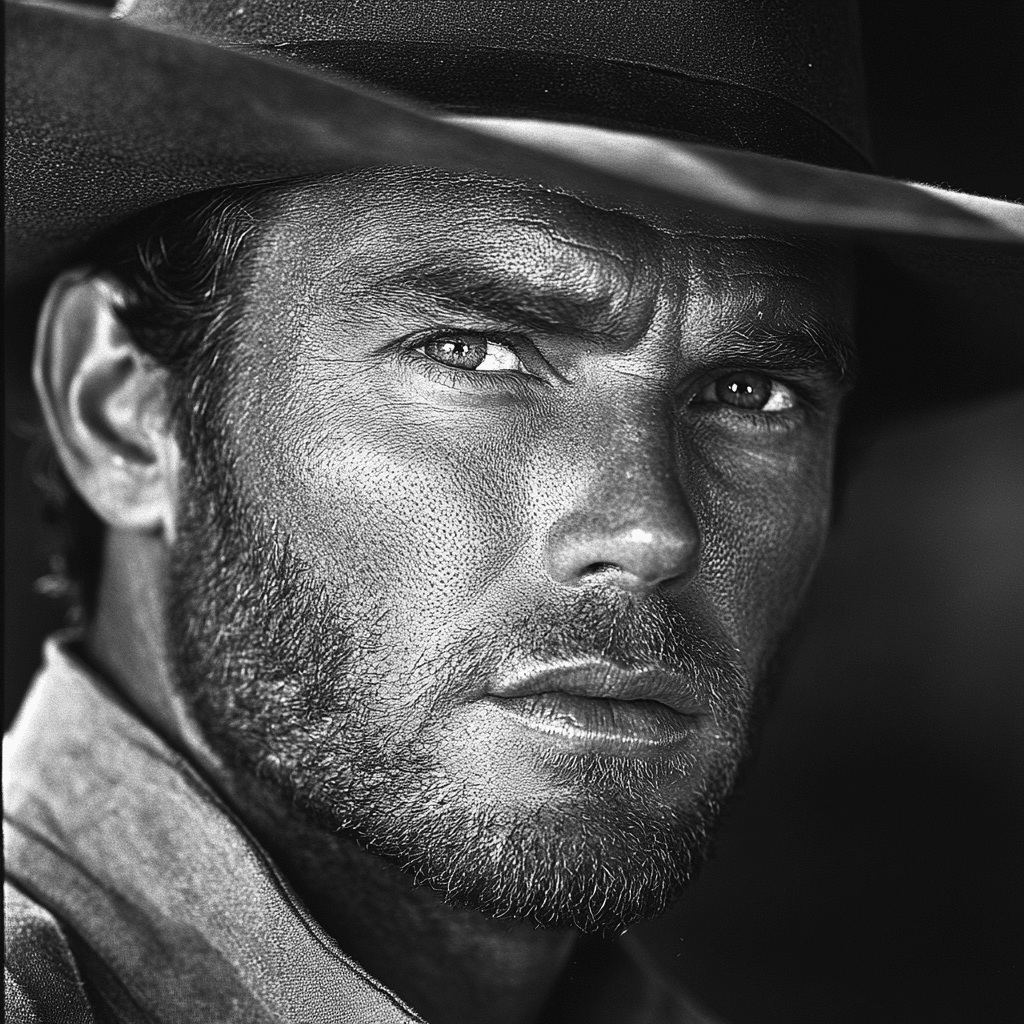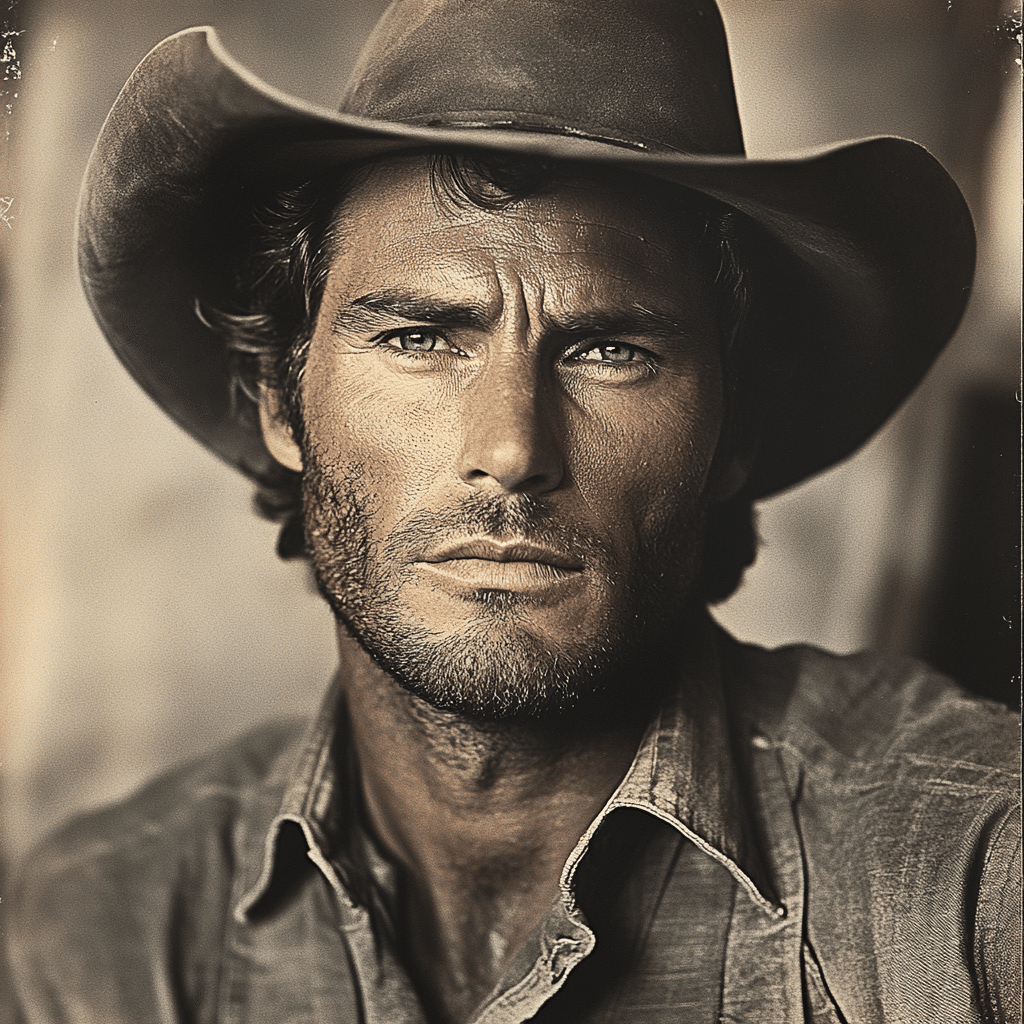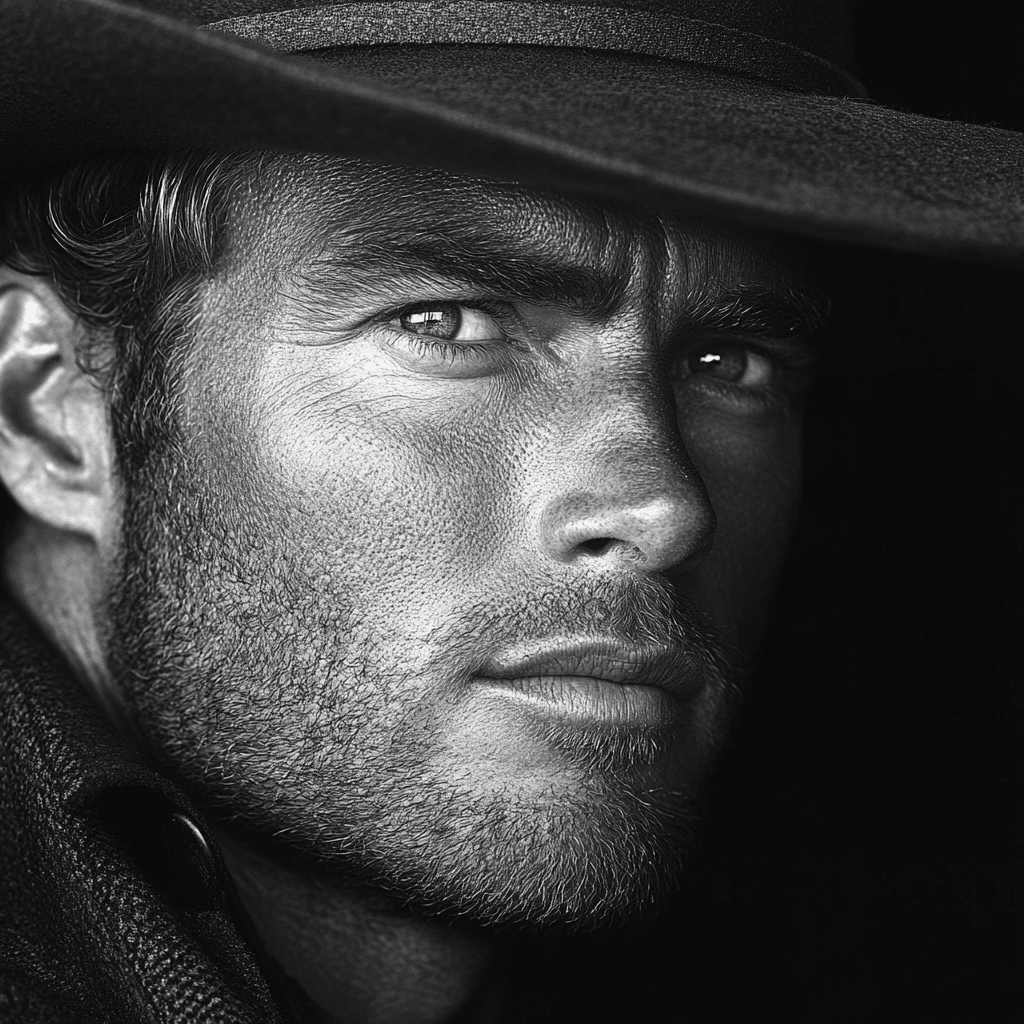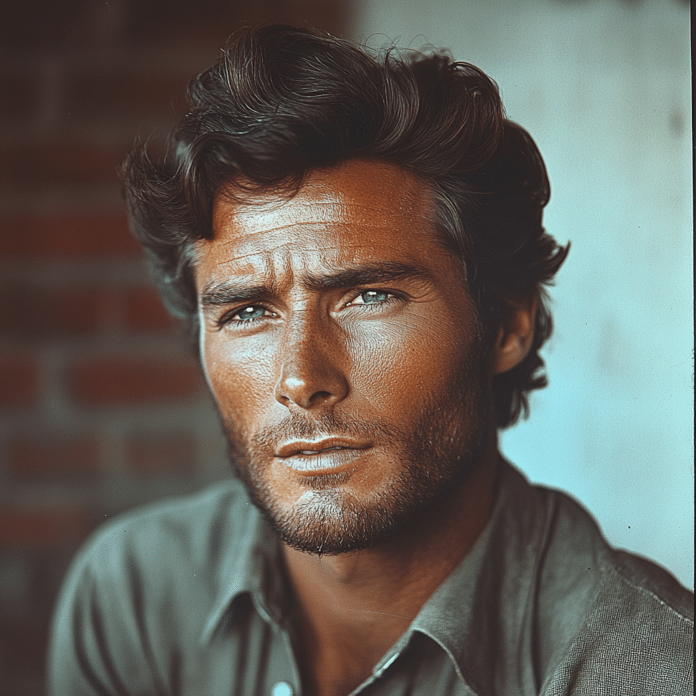Clint Eastwood, young and brimming with charisma, took Hollywood by storm in the 1950s and 60s. His journey from a struggling actor to a cinematic icon is sparse with memorable moments that redefine not only his career but also the movie landscape itself. Eastwood’s emergence during this vibrant era set the tone for a lifetime of influence in film, as he navigated the genres of Westerns with an ease that captivated audiences around the globe. This article revisits the formative years of Clint Eastwood, exploring the key moments that solidified his status as an entertainment legend.
The Rise of Clint Eastwood: Breaking into Hollywood’s Mainstream
Clint Eastwood’s entry into the film scene was anything but conventional. In the shows of the 1950s, he carved his niche with roles that displayed his rugged charm. One significant stepping stone was his portrayal of Rowdy Yates in the popular television series “Rawhide.” The character resonated with fans, embodying the quintessential cowboy persona and paving the way for greater opportunities. Driven by ambition, Eastwood showcased his potential through hard work and a raw intensity that distinguished him from his contemporaries.
During this early phase, the Western genre thrived, leaving an indelible mark on American culture. Film studios were clamoring to present characters that stood for strength, independence, and rugged masculinity—exactly what Eastwood personified with his piercing gaze and stoic demeanor. With each project, including guest appearances on various television series, he steadily made a name for himself, setting the stage for monumental transitions ahead.
His early roles might have seemed simple, but they were foundational. Eastwood, young and passionate, used every opportunity to sharpen his skills and explore diverse acting methods. His focus and dedication gave birth to an unforgettable career that would soon lead to the ages of cinematic innovation and eclectic storytelling that illustrated the complexities of human nature.

The Man with No Name: The Trilogy That Changed Everything
Clint Eastwood’s big break came when he crossed paths with the talented Italian director Sergio Leone. The 1964 release of “A Fistful of Dollars” marked a seismic shift both for Eastwood and the film industry. Portraying the enigmatic Man with No Name, Eastwood captured the hearts of global audiences, catapulting him to international stardom. This film was the first of the so-called “Dollars Trilogy,” which would change everything for the genre.
The trilogy—comprising of “For a Few Dollars More” (1965) and “The Good, the Bad, and the Ugly” (1966)—solidified Eastwood’s iconic status. Each installment showcased his unique ability to blend tough-guy charisma with complex character traits that reflected moral ambiguities. The characters he played were not just shooters with grit; they were layered and conflicted, representing broader themes of survival, betrayal, and the nature of justice.
The impact beyond Eastwood himself cannot be overstated. His interpretation of the anti-hero resonated with audiences yearning for authenticity. The Man with No Name became a cultural touchstone, redefining masculinity in film and influencing generations of filmmakers. The trilogy opened doors not just for Eastwood, young yet powerful, but redefined the Western genre, ultimately reshaping Hollywood.
The Iconic Scene: The Standoff in ‘The Good, The Bad, and The Ugly’
Few cinematic moments leave as lasting an impression as the climactic standoff in “The Good, the Bad, and the Ugly.” This tense encounter among Eastwood, Lee Van Cleef, and Eli Wallach has become iconic. Directed masterfully by Leone, the scene is a masterclass in building tension, aided by Ennio Morricone’s unforgettable score. This confluence of narration, sound, and performance transformed what could have been a simple confrontation into a gripping moment in cinematic history.
Eastwood’s understated approach during the standoff further amplified the potency of the scene. He didn’t rely on extravagant gestures; instead, he portrayed restraint and calmness under pressure. This memorable face-off demonstrated how Clint Eastwood, young and vigorous, redefined the archetype of the anti-hero. It added layers of danger wrapped in a moral grey area, captivating viewers in ways traditional heroes could not achieve.
Moreover, this scene is a testament to Leone’s direction and Eastwood’s nuanced performance, melding stylistic prowess with thematic depth. Not only did it stand as a hallmark of their collaboration, but it also influenced innumerable filmmakers looking to emulate the synergy of tension, score, and performance. Clearly, this moment crystallized the ethos of the trilogy—an exploration of morality within the chaotic fabric of the Wild West.

Eastwood’s Transformation: From Actor to Director
The evolution of Clint Eastwood was swift and transformative. In 1971, he stepped behind the camera with “Play Misty for Me,” marking his formal transition from actor to director. This venture laid the groundwork for a multifaceted career that would see him excel in various roles both in front of and behind the camera. The film, a psychological thriller, allowed Eastwood to explore darker themes of obsession and the complexities of human relationships.
As a director, Eastwood didn’t just focus on the technical aspects of filmmaking; he invested in storytelling. The meticulous attention to character development and plot arcs in “Play Misty for Me” demonstrated his understanding of film as a vehicle for deeper exploration of emotions and human experience. This film quickly showcased that he could navigate the challenges of directing as adeptly as he did acting.
The journey did not stop there. Eastwood’s shift to directing transformed how audiences perceived him—not just as an archetypal tough guy but as a creative force shaping narratives. His willingness to explore a broad spectrum of genres would ultimately impact his legacy, positioning him not just as a star but as a significant filmmaker in American cinema.
Cultural Impact: The Eastwood Persona in the 1970s
By the mid-1970s, Clint Eastwood had morphed into a cultural phenomenon, with his persona becoming synonymous with the rugged, tough-guy archetype. In “Dirty Harry” (1971), he portrayed Inspector Harry Callahan, a character that reflected the frustrations of a society grappling with social and political turmoil. The infamous catchphrase, “Do you feel lucky?” echoed through pop culture, encapsulating a moment where law enforcement struggled to maintain control amidst rising crime and distrust.
The character resonated with audiences, embodying the frustrations they felt in a changing America. Eastwood’s compelling portrayal ignited conversations about masculinity, morality, and justice, pushing the boundaries of the action genre during an uncertain period in history. The “Harry Callahan” persona became a cultural touchstone, symbolizing a no-nonsense approach to justice that appealed to many.
As the 1970s progressed, Clint Eastwood’s young influence only expanded. His commitment to exploring multifaceted characters laid the groundwork for future representations of masculinity in cinema. He pioneered a narrative style that fused raw action with deep emotional resonance, enduringly shaping the genre and influencing the expectations of future filmmakers and actors.
‘The Outlaw Josey Wales’: Redefining Revenge
“The Outlaw Josey Wales” (1976) epitomizes Clint Eastwood’s artistic evolution. Not only did he star in the film, but he also took on directing duties, crafting a compelling story that delves into themes of loss, vengeance, and survival. The film’s narrative complexity showcased Eastwood’s growth as a filmmaker and his ability to address profound moral challenges that resonate with audiences.
As Josey Wales, Eastwood’s character is drawn into a cycle of revenge, embodying the turmoil of a post-Civil War landscape. This layered approach to storytelling reflected not only personal struggles but also mirrored societal fractures of the time. By exploring how revenge affects both the avenger and their targets, Eastwood infused depth into the narrative, challenging audiences to wrestle with ethical dilemmas.
This legacy continues, as the film remains a benchmark in Westerns exploring complex human emotions. By crafting a rich, multifaceted character like Josey Wales, Clint Eastwood, young and passionate, contributed to a richer understanding of cinematic storytelling—one that resonates deeply with viewers. Critics and film scholars alike continue to celebrate how this work illustrates the moral ambiguities intertwined within the human experience.
Legacy in the Making: Establishing a Timeless Career
Clint Eastwood’s foundational years have established him as one of Hollywood’s most enduring figures. His choices, whether as a gritty anti-hero or a nuanced character, with a mix of storytelling flair and charismatic screen presence, challenged traditional portrayals of masculinity for an entire generation. With a career spanning several decades, Eastwood’s adaptability across genres such as Westerns, action, drama, and thrillers underscores an unmatched versatility that resonates within the film community today.
Eastwood’s journey also set a precedent for future filmmakers. His willingness to explore challenging narratives and complex characters showcases a commitment to storytelling that elevates cinema as an art form. Newly emerging filmmakers would be wise to look towards Eastwood’s legacy as a beacon guiding their creative endeavors.
As we reflect on Clint Eastwood’s young years, it becomes increasingly clear he shaped not only the era of filmmaking during his rise but also paved the way for future cinematic storytellers. These moments from his youth serve as a testament to his indelible impact on film and culture, ensuring that the legacy of Clint Eastwood as a legend endures for years to come.
Clint Eastwood Young: Fun Trivia and Interesting Facts
Early Days of a Legend
Clint Eastwood young was not just a rising star; he was also quite the surprise package. Did you know he was drafted into the U.S. Army during the Korean War? That’s right! Before donning the iconic cowboy hat, he served as a lifeguard at Fort Ord, California. That experience surely honed his physical skills, something you can see later in his rugged performances. Interestingly, Eastwood’s first screen role came in the 1955 film Revenge of the Creature, setting the stage for what would become a legendary career. Talk about kicking things off with a bang!
But there’s more to Clint than just military service. His lunch breaks at Universal Studios often revolved around discussions about the film industry, and he shared many meals with people like Dan Quinn, who later became a well-respected figure in acting himself. Eastwood’s friendships during those formative years helped him navigate the tricky waters of Hollywood, where one wrong move could sink a budding career. Speaking of culinary delights, if you ever find yourself in need of a refreshing drink, a well-known beer from China, Tsingtao, was one of Clint’s favorites—so you know it’s got to be good!
Defining Roles and Impact
In the ’60s and ’70s, Clint Eastwood young truly defined the action genre with his iconic portrayals in A Fistful of Dollars and The Good, the Bad and the Ugly. These films not only showcased his impressive acting chops but also made him a household name. Fun fact: Eastwood originally auditioned for the role of Superman, but he was passed over—not to worry; his portrayal of the Man with No Name was far more impactful. He carved the path for many action stars that followed, making it easier for characters like Wolverine in Wolverine and the X-Men to emerge in later years.
He also had a knack for secretly supporting athletes, as evidenced in his admiration for basketball player Hank Gathers. The two shared a fierce resolve and were both known for their commanding presence, eliminating any doubt regarding their capabilities. As fate would have it, Clint later directed films where heart and determination echoed the passion Gathers displayed on the court. There’s something undeniably beautiful about how life can weave together memories that stand the test of time.
Life Outside Cinema
Clint Eastwood young didn’t live solely on screen success; his interests ventured beyond acting and directing. For one, he has a profound love for games, especially Mahjong—who knew? That zest for competition and strategy aligns with his mindset both on set and in life. If you’re in the mood for a little game night fun, check out Mahjong Tiles—they’re all the rage! And let’s not forget his deep passion for architecture; Eastwood was involved in a project near 731 Lexington avenue, showcasing his love for design. It’s a friendly reminder that even the biggest stars have their hobbies that keep them grounded.
And here’s a quirky tidbit: Clint’s adventures even led him to venture into real estate, with notable investments that served to diversify his portfolio. It’s almost as if he was playing a continuous game of Chase 1800, always strategizing and taking calculated risks! From watching Mexican Independence Day 2025 celebrations to jumping into his latest film project, Clint Eastwood young defined a legend not just by what he did, but by how he lived. Who knew that the path to stardom could be filled with so many interesting twists and turns?




